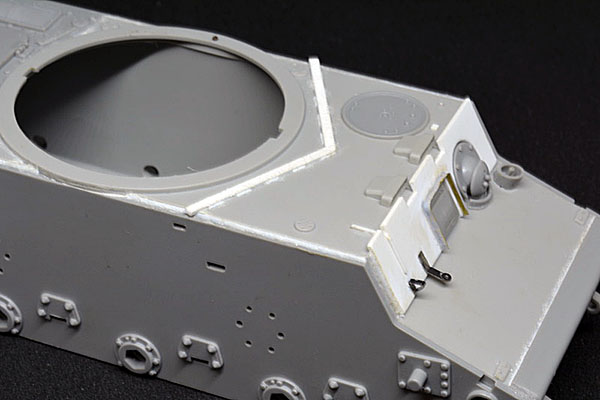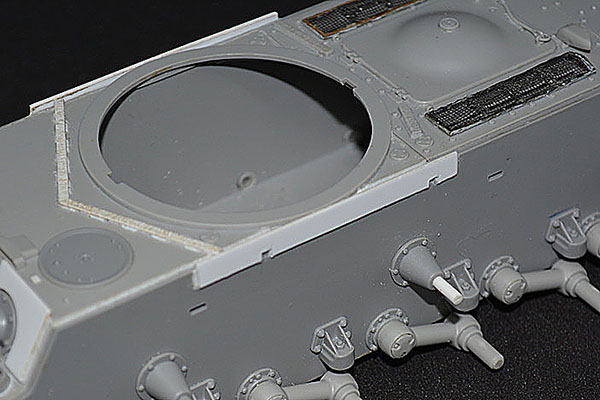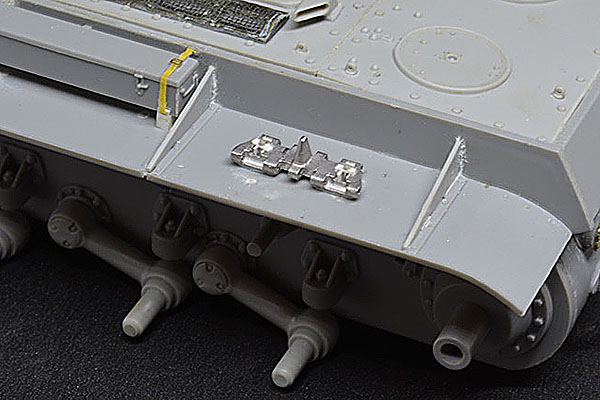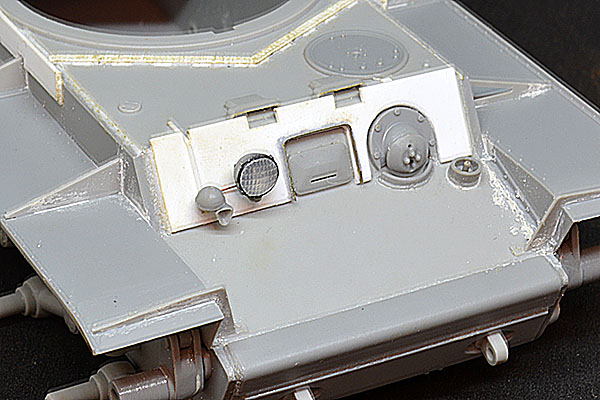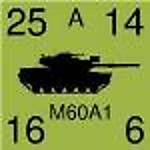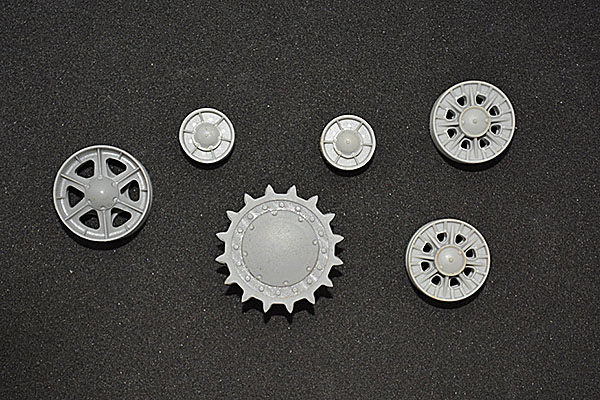The rain guard over the driver’s visor is visible in the photo of ‘Powerful’ and like the Parfino vehicle, it has extended sides all the way down to the glacis plate, similar to the design seen on KV-8 flamethrower tanks. At first I tried making the guard from thin styrene strip but after several failed attempts where the strip split as I tried to bend the corners, I used 10-thou brass strip instead, which bent far more easily.
I also added the hull MG shield from the Model 1942 kit and the power conduit for the headlamp and horn from 20-thou rod, with the forward end drilled out so I could add cabling later. The mounting brackets for the headlamp and horn came from Eduard’s TP088 update set.
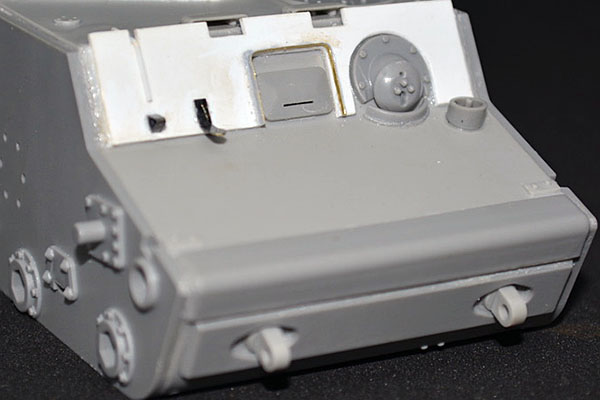
The grey around the edges of the brass strip is Mr Surfacer 1000 which I brushed on to show up any gaps or rough spots from the superglue that I used to attach the brass.
Continuing to work backwards onto the hull top, I added the driver’s periscopes using parts WH4 from the KV-1S kit, the hull hatch using part F9 from the Model 1942 kit, and the little rectangular bump stop forward of the hatch from a small piece of 10-thou styrene, since that component is missing from the KV-1S hull top.
The Parfino vehicle has a chevron-shaped segment of armor on the hull top to protect the turret ring, which is supplied in the Model 1942 kit. Photos of the Parfino vehicle show the armor to be rather shallow compared to the part in the kit and, suspicious, I did a quick test fit of the turret. Sure enough, the tall armor prevented the turret from fully rotating.
I started out trying to cut the kit part down but I wound up replacing it with 40-thou styrene strip cut to size using the kit part as a template. I added weld beads from 10-thou rod softened and textured as mentioned above, and scored the top of the armor with a hobby knife to represent torch cuts.
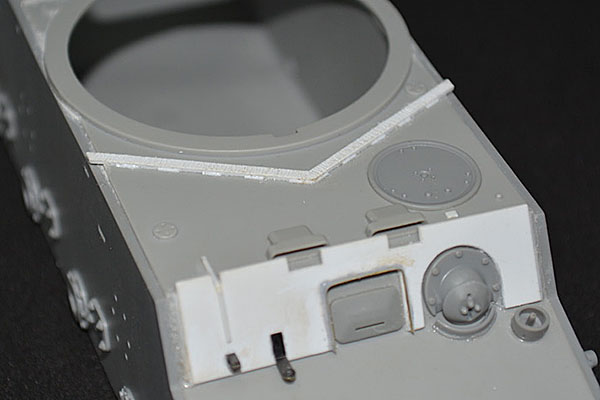
The Parfino vehicle’s engine deck is missing, replaced with heavy sheet metal, but most Model 1942 hulls had applique armor on the forward corners of the engine deck, and the Trumpeter kit provides this armor molded in-situ. Like the forward turret ring armor however, it’s too tall for the KV-1S turret to rotate so I cut it down to match the forward armor.












